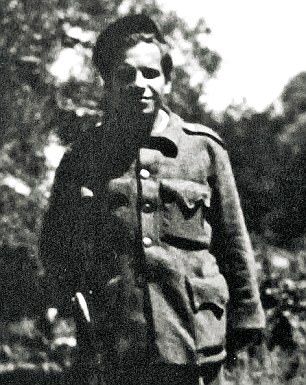There was such an intense interest in the fate of Leslie Durrell, prompted by the ITV series The Durrells, that I thought I would add some more information from Douglas Botting’s official biography of Gerald.
Leslie was a private person, a fictionalized version of whom has been transformed into a public figure and thrust into the spotlight first by Gerald himself, who appropriated some of his stories and retold them as having happened to him, in My Family; and most recently by the ITV series. Leslie himself was not “famous” like his brothers, and by all accounts never sought to be, yet since he has become a “character” in a public drama, people want to discuss his story.
Botting only concentrates on negative aspects of Leslie’s life and relationships with his brothers, describing him as “the enigma of the family, the cracked bell who was always striking a dud note…unable to settle to anything, drifting and shiftless and convinced the world owed him a living” though he was “basically well-intentioned and never malicious” according to Botting–whereas Michael Haag’s book illuminates some more positive elements.

Gerald and Lawrence, who had public reputations to protect, became increasingly worried that Leslie’s actions– some of which allegedly bordered on, or even crossed into, the criminal– would damage them. Botting traces this trajectory back to Leslie’s childhood in Corfu, which Leslie had said consisted of “five golden, drifting, ultimately destructive years.” According to Botting, the family’s return to England “marked a big step in his gradual descent into waste and oblivion,” in particular after he was declared unfit for military service. After that “nothing much worked for Leslie.”
By 1946, when Gerald went to stay at his mother’s Bournemouth home ahead of his animal collecting expedition to Africa, Botting notes that at this time, the “erratic behavior of Leslie..had been giving cause for concern.” Leslie had gotten Maria, the family’s Greek maid, pregnant.
Leslie, for his part, felt the pressure that the spotlight of being the less successful brother of two famous writers brought. Even when he went to live in Kenya, in the late 1960s, where he worked as a bursar at a school near Mombasa, he found that “it was terrible” after people found out whose brother he was.
“I felt like something out of a zoo,” he admitted.
It was in Kenya that Leslie managed to get himself into a lot of financial trouble, after allegedly conning a woman out of a large amount of money. Botting records how, after Gerald received a letter from one Mr Wailes whose mother had been “involved” in this incident, Gerald immediately wrote to Leslie accusing him of “implying” that he, Gerald, would help him, and adding that “I am not in any position to help you financially and I do strongly object to receiving letters from complete strangers implying that my only function in life is to rescue you.”
Leslie and his wife Doris fled Kenya, but a Guardian journalist managed to track the pair down in London’s Marble Arch, and wrote an article about him.
Gerald claimed that he and Lawrence had tried to help Leslie throughout his life, but to no avail, noting that “though my elder brother and I frequently tried to help him, he would always end up doing something that would make us lose patience with him.”
Despite everything, however, Leslie’s former employer in Kenya had nice things to say about him, including that he was kind and reliable, and a brilliant raconteur who “should have been a writer.” However, he had “no obviously marketable talents” and was “scarred by a bizarre childhood.”
All in all, Leslie appears to have suffered not just in the shadow of his two very famous and successful (outwardly at least) brothers, but also, and perhaps mostly, because of the spotlight this threw on him. Had Leslie been the sibling of two ordinary brothers, it is unlikely anything he did would have attracted nearly as much negativity.







